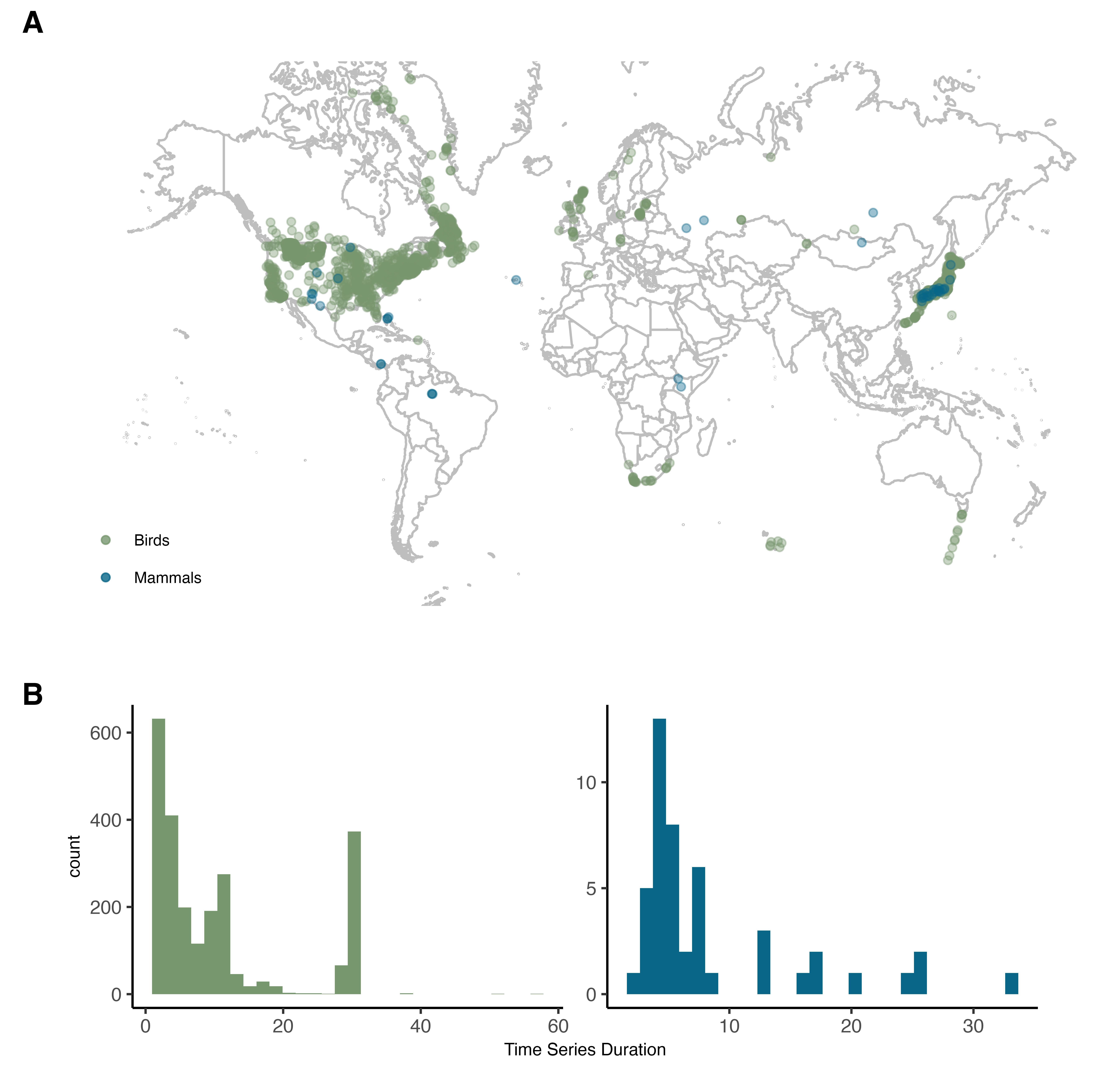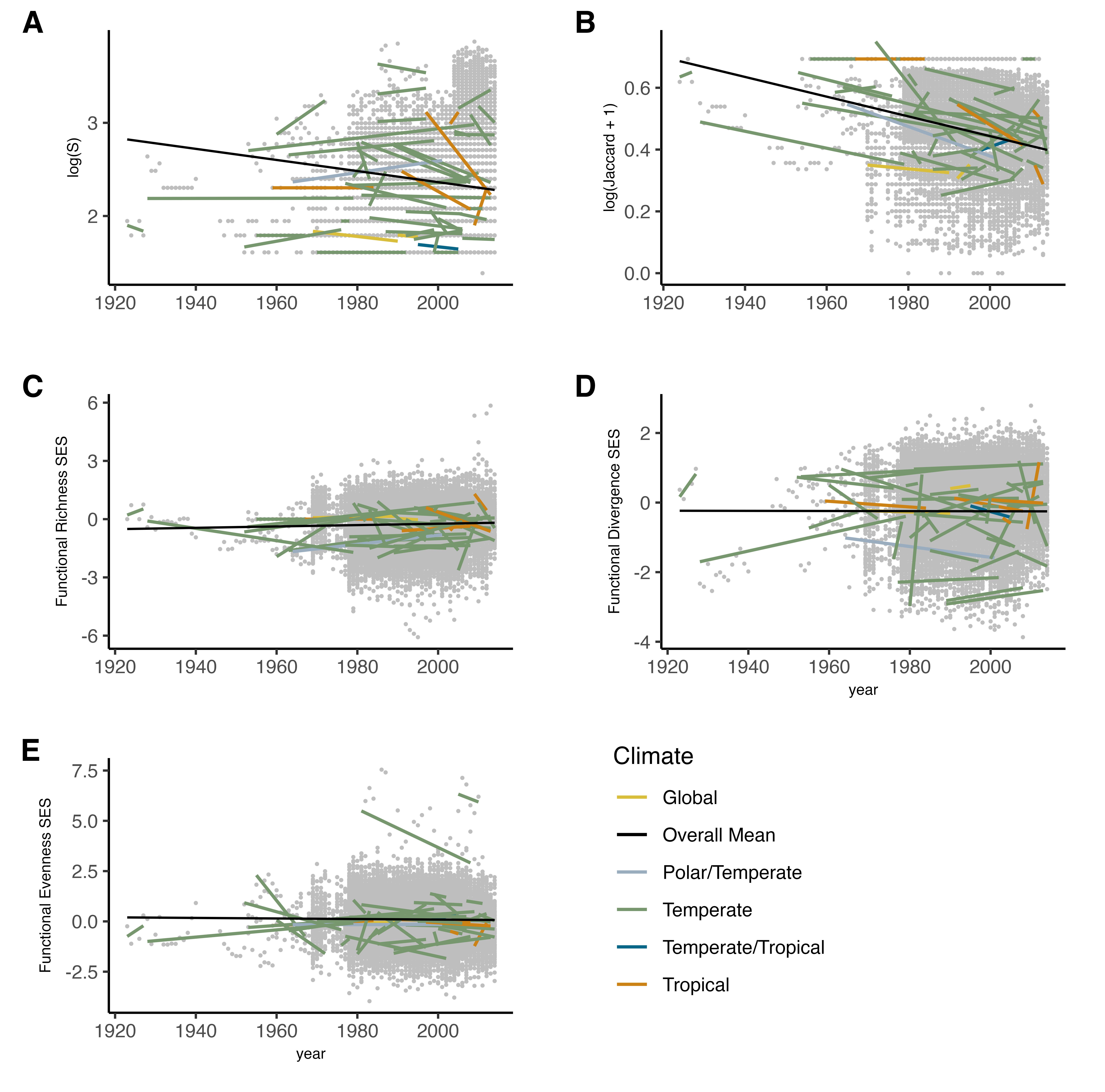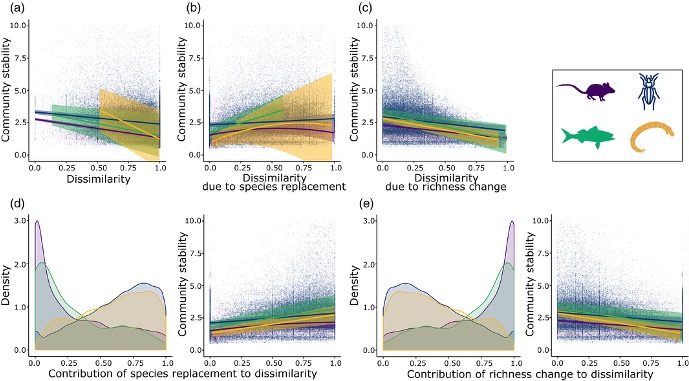Temporal Biodiversity Change
Measuring change in ecological community structure through time.
A major theme of my research is leveraging existing long term monitoring efforts to understand the impact of global change drivers on ecological communities. I approach this question using multiple dimensions of biodiversity, including tradititional species-based metrics like alpha and beta diversity, their functional diversity counterparts that incorporate data on functional traits, and recently reaching into interaction network approaches.


I analyzed thousands of community time series to assess change in functional structure across taxa, time, and space, which showed that across communities there is no general trend in functional metrics. However, at the level of individual communities there is profound reorginization leading to changes in functional evenness and losses and gains in functional redundancy with potentially profound implications for those communities’ ability to respond to future stressors (Norman et al., 2025).
This work built on previous explorations of the relationship between community change (i.e. turnover) and the maintenance of community stability. We found that temporal fluctuations in species abundance and turnover of functionally similar species help stabilize communities (Jarzyna et al., 2022).

After spending a lot of time thinking about community structure, the potential to incorporate changes in species interactions through time felt like the natural next step. As part of a BIOS2 funded working group, we developed an approach for moving from deterministic to probabilistic expressed interaction networks, that take into account ecological and community context when expressing the likelihood of an interaction occurring (Banville et al., 2025). This is foundational theoretical work for better incorporating interaction data into measures of community change.